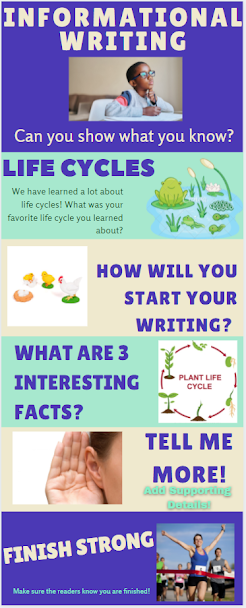When planning to develop my blended course, I’m at some challenges and
some triumphs. The triumph was a feeling of accomplishment and trying new
things. My students loved having the power to go home yeah and preview or work
on upcoming lessons. They came in feeling like they already knew what we were
going to do for the day, which gave them a quote leg up. It was exciting for me
when they would come in ready to learn and prepared to ask and answer
questions. This was especially helpful for the students that always ask, “what
are we going to do today?” or “what’s next?”. I never thought of how it gave
children the power of knowing what would be occurring the next day. This seemed
to help their self-esteem.
This course also came with its challenges. I
had some parents who were not happy with the “extra schoolwork” since they were
in school all day. Coming out of a pandemic and one hundred percent virtual learning,
parents were not wanting to “be the
teacher” at night and wanted their children off of the computers since they
have had too much screentime in the last year. I quickly realized I needed to
compose a letter with my reasoning and let them know why we were doing a quote
flipped classroom. When I wrote an explanation letter about what I wanted them
to do at night, I did not include the “why”. Once I let the parents know why I
was doing what I was doing and some research behind it, they were OK with it.
Some students did have extracurriculars that impeded, so I try to do as much as
I could where it would fall on a Tuesday night because, in my district,
Wednesdays are 100% virtual. Students are to work on uncompleted work or be
pulled into small virtual groups by their teachers.
I would like to implement this next year as
well. I would make sure to state my reasoning to parents, to begin with, and
not make them think I am making them be the teachers. Because of the pandemic,
students can navigate the technology well. Next year, I will make sure that the
computer lab teacher goes over using specific digital tools before I implement
them in a flipped classroom environment. Depending on the age of the students,
I feel there was more that could be done. As a second-grade teacher, I think a
lot of my job is to scaffold student knowledge regarding the use of technology
and cooperative learning. Students need to learn how to work together. Students
also need to learn how to navigate technology independently. This is not
something that happens quickly and takes practice.



